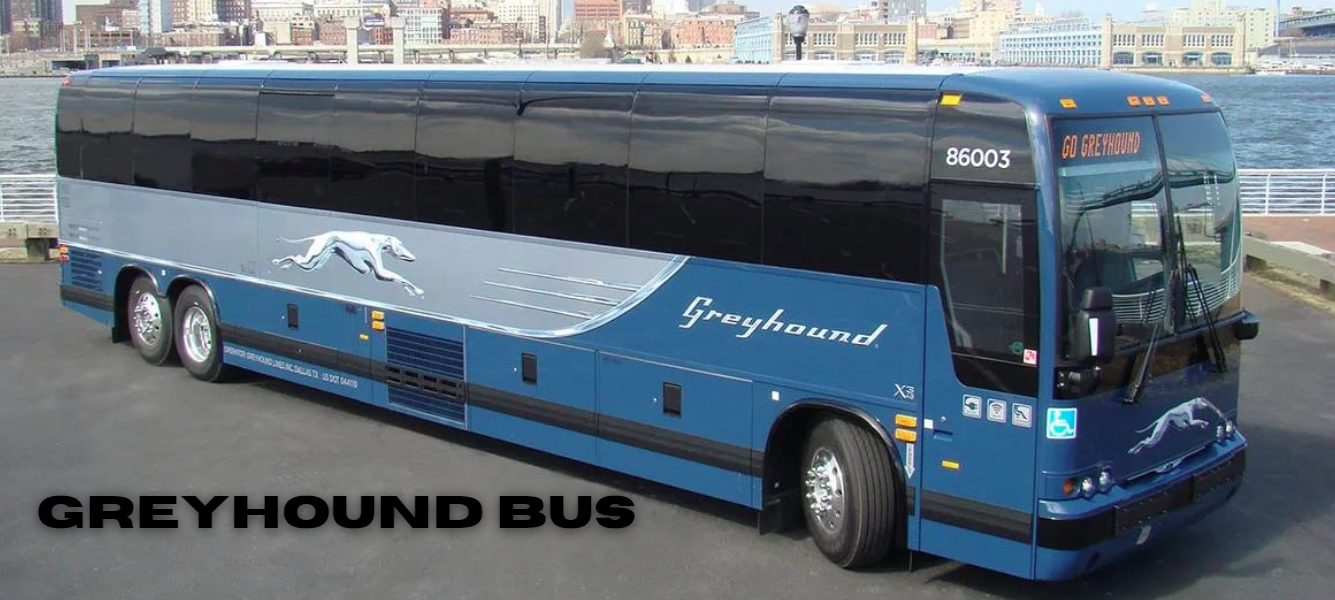Contents
- 1 Introduction
- 2 History of Greyhound Bus
- 3 Greyhound Bus Services
- 4 Greyhound Bus Operations
- 5 The Future of Greyhound Bus
- 6 FAQs about Greyhound Bus
- 6.1 1. How do I book a Greyhound Bus ticket?
- 6.2 2. What should I bring on a Greyhound Bus trip?
- 6.3 3. Can I change or cancel my Greyhound Bus ticket?
- 6.4 4. Are pets allowed on Greyhound buses?
- 6.5 5. What are the baggage policies for Greyhound Bus?
- 6.6 6. How early should I arrive before my Greyhound Bus departure?
- 7 Conclusion
Introduction
The Greyhound Bus is an iconic mode of transportation in the United States, known for its extensive network and affordability.
Since its inception in 1914, Greyhound Lines, Inc. has grown to become the largest provider of intercity bus transportation in North America, offering services to over 3,800 destinations across the continent. This article delves deep into the history, services, operations, and future prospects of Greyhound Bus, providing unique insights and analyses that surpass existing online resources.
History of Greyhound Bus
Early Beginnings
Greyhound Bus began its journey in 1914 when Carl Wickman, a Swedish immigrant, started a small transportation service in Hibbing, Minnesota. He transported miners in a Hupmobile, charging 15 cents per ride. This modest start laid the foundation for what would become a vast transportation network.
Expansion and Growth
The 1920s and 1930s saw significant expansion for Greyhound. The company acquired several smaller bus lines, creating a more extensive network. By the mid-1930s, Greyhound was operating coast-to-coast services, offering affordable travel options during the Great Depression.
World War II and Post-War Era
During World War II, Greyhound played a crucial role in transporting military personnel across the country. Post-war, the company continued to expand, introducing new routes and modernizing its fleet. The 1950s and 1960s were the golden years for Greyhound, with high ridership and profitability.
Challenges and Adaptations
The 1970s and 1980s brought challenges, including rising fuel prices, competition from airlines, and changing travel preferences. Greyhound adapted by restructuring operations, modernizing its fleet, and focusing on customer service. Despite these efforts, the company faced financial difficulties, leading to bankruptcy in the early 1990s.
Resurgence and Modernization
Greyhound emerged from bankruptcy and embarked on a path of modernization. The company introduced new buses with enhanced amenities, expanded services, and embraced digital technology for ticketing and customer service. Today, Greyhound remains a vital transportation option for many Americans.
Greyhound Bus Services
Route Network
Greyhound’s extensive route network connects over 3,800 destinations in North America, including major cities, small towns, and rural areas. The network spans the United States, Canada, and Mexico, offering a wide range of travel options for passengers.
Ticketing and Pricing
Greyhound offers several ticketing options, including one-way, round-trip, and flexible fare tickets. Prices vary based on distance, time of booking, and demand. Greyhound frequently offers discounts and promotions, making bus travel an affordable option for many.
Onboard Amenities
Modern Greyhound buses are equipped with a range of amenities to enhance passenger comfort, including:
- Free Wi-Fi
- Power outlets at every seat
- Reclining seats with extra legroom
- Onboard restrooms
- Air conditioning
Safety and Accessibility
Safety is a top priority for Greyhound. The company adheres to strict maintenance protocols and driver training programs to ensure passenger safety. Additionally, Greyhound is committed to accessibility, offering services for passengers with disabilities, including wheelchair-accessible buses and assistance for boarding and deboarding.
Greyhound Bus Operations
Fleet Management
Greyhound’s fleet consists of modern, fuel-efficient buses designed for long-distance travel. The company regularly updates its fleet to incorporate the latest technology and improve fuel efficiency. Maintenance and inspections are conducted regularly to ensure the highest standards of safety and reliability.
Driver Training and Safety
Greyhound drivers undergo rigorous training, including classroom instruction and on-the-road experience. The company emphasizes safety through continuous education and monitoring, ensuring drivers adhere to all safety protocols and regulations.
Customer Service
Customer service is a key focus for Greyhound. The company offers multiple channels for customer support, including phone, email, and social media. Greyhound’s website and mobile app provide easy access to booking, trip information, and customer service resources.
Environmental Initiatives
Greyhound is committed to reducing its environmental impact. The company has implemented several initiatives to improve fuel efficiency, reduce emissions, and promote sustainability. These efforts include using cleaner fuels, optimizing routes, and investing in fuel-efficient buses.
The Future of Greyhound Bus
Technological Advancements
Greyhound is continually exploring new technologies to enhance the passenger experience. Future advancements may include improved onboard entertainment, enhanced connectivity, and advanced safety features. Greyhound is also investing in digital platforms to streamline booking and customer service processes.
Expansion of Services
Greyhound is looking to expand its services to meet the evolving needs of travelers. This includes exploring new routes, partnerships with other transportation providers, and offering more flexible travel options. Greyhound aims to remain a competitive and viable transportation option for future generations.
Challenges and Opportunities
The transportation industry faces several challenges, including competition from other modes of travel, changing consumer preferences, and economic fluctuations. However, Greyhound has opportunities to innovate and adapt. By leveraging technology, enhancing customer service, and expanding its network, Greyhound can continue to thrive in a dynamic market.
FAQs about Greyhound Bus
1. How do I book a Greyhound Bus ticket?
You can book a Greyhound Bus ticket online through the Greyhound website, mobile app, or by visiting a Greyhound terminal. Tickets can also be purchased from authorized agents and retail partners.
2. What should I bring on a Greyhound Bus trip?
Passengers are encouraged to bring personal identification, their ticket or confirmation number, and any necessary travel documents. It’s also advisable to bring snacks, entertainment, and a travel pillow for comfort.
3. Can I change or cancel my Greyhound Bus ticket?
Yes, Greyhound offers options to change or cancel tickets, though fees may apply. Flexible fare tickets offer more flexibility for changes and cancellations. It’s best to review the terms and conditions when purchasing your ticket.
4. Are pets allowed on Greyhound buses?
Only service animals are allowed on Greyhound buses. Pets are not permitted due to health and safety regulations.
5. What are the baggage policies for Greyhound Bus?
Greyhound allows one carry-on bag and one under-the-bus bag per passenger. Additional baggage or oversized items may incur extra fees. It’s important to review Greyhound’s baggage policy before traveling.
6. How early should I arrive before my Greyhound Bus departure?
Passengers are advised to arrive at least 30 minutes before departure for domestic trips and at least 60 minutes for international trips. This allows time for check-in, baggage handling, and boarding.
Conclusion
Greyhound Bus remains a vital part of the American transportation landscape, offering affordable and accessible travel options to millions of passengers each year. From its humble beginnings in Minnesota to its modern, technologically advanced operations, Greyhound has continually adapted to meet the needs of travelers.
As the company looks to the future, it aims to enhance the passenger experience through technological advancements, expanded services, and a commitment to safety and sustainability.
This comprehensive guide provides a detailed overview of Greyhound Bus, offering unique insights and analyses that go beyond existing resources. Whether you’re a seasoned traveler or planning your first trip, understanding the history, services, and future prospects of Greyhound can help you make informed travel decisions.













































